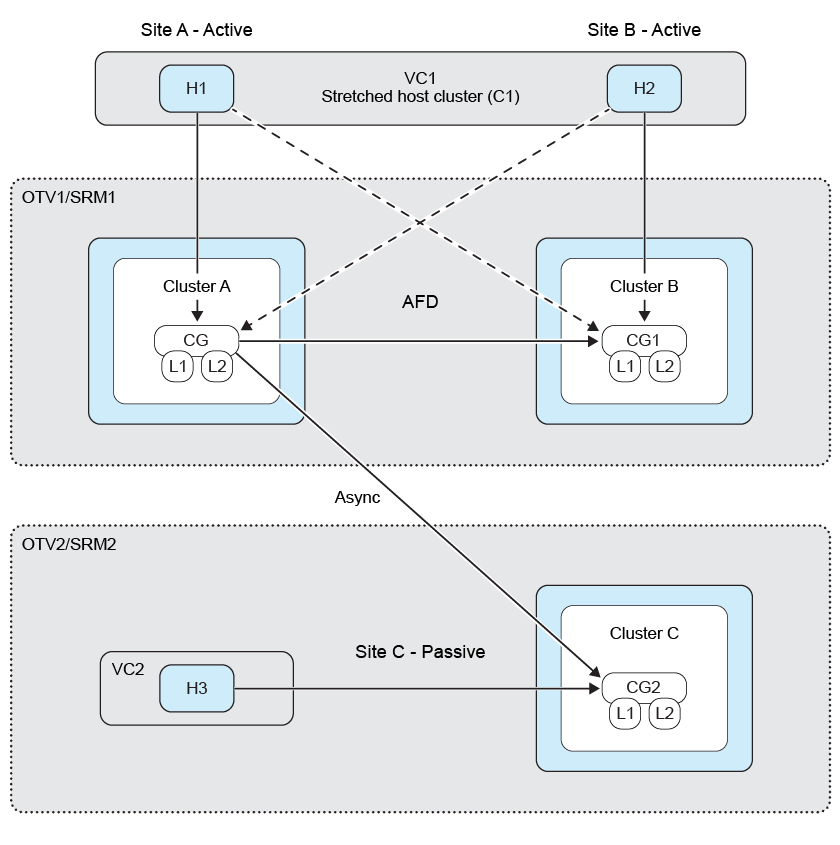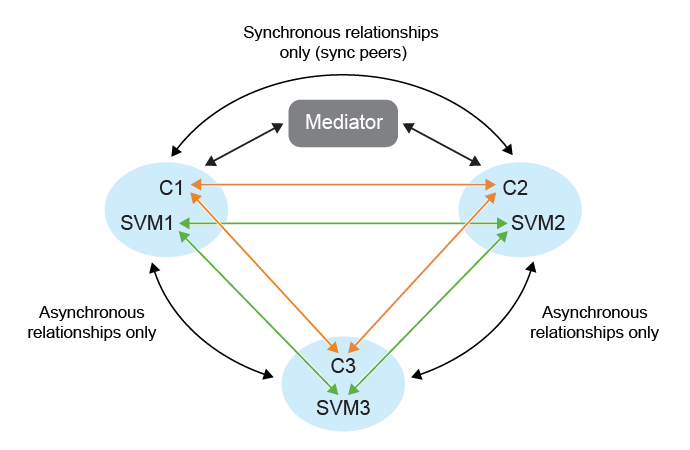Fan-out protection
 Suggest changes
Suggest changes


In a fan-out protection scenario, the consistency group is double protected with synchronous relationship on the first destination ONTAP cluster and with asynchronous relationship on the second destination ONTAP cluster. The create, edit, and delete SnapMirror active sync protection workflows maintain the synchronous protection. VMware Live Site Recovery appliance failover and reprotect workflows maintain the asynchronous protection.

|
Fan-out is not supported for SVM user. |
To set up fan-out protection, peer the three site clusters and SVMs.
Example:
If |
then |
|
|
The following diagram shows the fan-out protection configuration:


-
Select a new place holder datastore. The placeholder datastore selection criteria for phased protection are:
-
Do not place the placeholder datastore in the host cluster you are protecting.
-
If you need to include the placeholder datastore in the host cluster, add it to VMware Live Site Recovery appliance before setting up SnapMirror active sync protection. With this setup, you can leave the placeholder datastore out of protection.
For more information, refer to Select a Placeholder Datastore
-
-
Add datastore to the host cluster protection by following Modify protected host cluster. Add both asynchronous and synchronous policy types.


